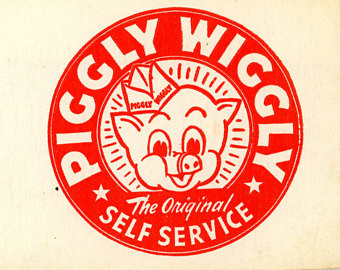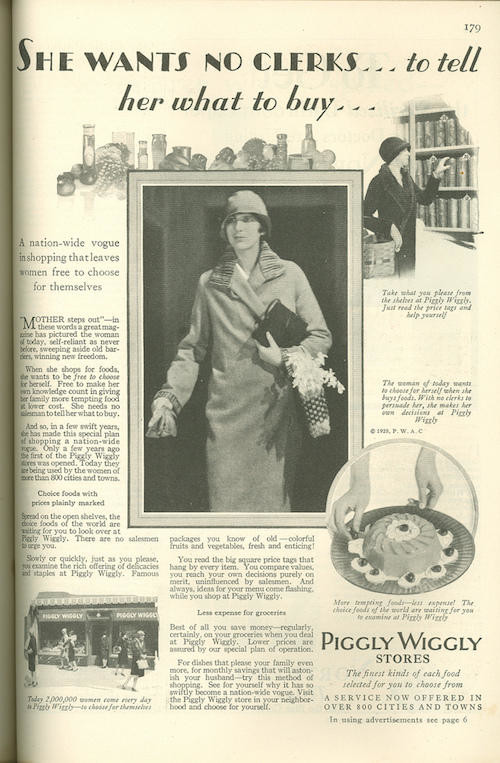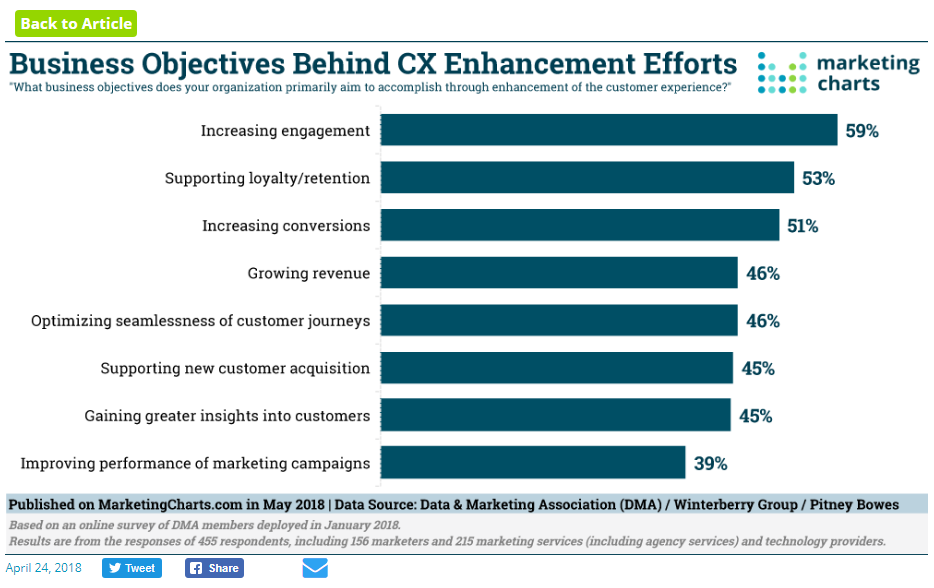
Who in the heck is Clarence Saunders? Good question. However; with what Clarence Saunders did on September 6, 1916, some put him right up there with Henry Ford bringing the automobile to the mass market. All of us take his 100-year old genius idea for granted today and every week. So, what did Clarence Saunders do in Memphis, Tennessee back in 1916?
He opened up the first Piggly Wiggly grocery store. (Hey, a name as crazy as Kwanzoo!)
I know you weren’t around in 1916, but what Mr. Saunders did that day revolutionized the retail industry—especially retail grocery—forever. With that first Piggly Wiggly store, he introduced the world to the “self-service” model. Prior to September 6, 1916, customers would race to a grocery store, wait in a line, make their way up to the counter, give their order to one of the clerks, and wait for the clerk to go into a back room. The clerk would find the items, sometimes measure them out, bag the items, and total up the cost.
Often shoppers would wait, and wait, and wait a long time. On top of that, grocery item quality was inconsistent and prices were not listed. Two clerks could charge two different prices for the same item. Home delivery or store credit came at a very high markup …but that was the customer experience of the day.
Clarence Saunders changed all that. For the first time, customers could walk aisle after aisle and see—and touch—more than 1000 products.
Just imagine…Instead of having clerks weigh out staples such as flour, customers could grab pre-weighed bags of flour. They could also weigh out their own produce. Every item had displayed pricing associated with it—typically lower than the traditional grocery stores. Shoppers could actually look at similar products from different manufacturers and compare brands and pricing. Customers could also access refrigerated displays that showcased butter, milk, and more.
Because cash was the only accepted form of payment, shoppers also got for the first time a printed receipt. The Piggly Wiggly stores typically offered four times the selection of the traditional grocery store.
But Saunders did not stop there in re-defining the grocery customer experience. In addition to introducing refrigerated foods and cash registers to itemize purchases, he offered shopping baskets, put small hooks over each product so employees could change out pricing easily when necessary, and installed long lights that made each aisle bright and allowed shoppers to see products better. Soon Piggly Wiggly grocery stores were popping up around the country.
Not everyone embraced the new self-service model. Some claimed that shoplifting would be a serious issue. Others felt the “cash only” approach and the lack of home delivery would be a deal-breaker. Some shoppers just found change and Saunders’ model unappealing. Saunders’ answer? Storytelling. He ran a lot of ads. In one effective ad he focused on a shopper who did not want to handle a stick—so she went across the street to a traditional grocery store where she paid a lot more have the same products gathered and bagged for her.
Mr. Saunders believed in his model and in his customers. He trusted them to do the right things. He also felt that with Piggly Wiggly offering lower prices; wider, brighter aisles; more selection; higher quality goods; and a lot of conveniences, shoppers would not only try out the self-service model—they would come back time and time again. Advertising and his new customer experience would drive awareness, reach, engagement, and more.
The customer experience that Clarence Saunders dreamed up in 1916 soon made its way to clothing stores and every other form of retail. Sam Walton expanded upon the idea and created Walmart, the largest, self-service, retail business.
What about today’s B2B marketers? What kind of customer experiences are we capable of creating?
I know that here at Kwanzoo, we have already started following Piggly Wiggly with our non-conventional name. But beyond that, we are creating “Account-Based (ABM) Experiences for Global B2B Enterprises that tie effective display advertising and website channels with global reach and insights for sales development reps to enrich the experience for our customer.
I’ll admit it, before we offered Account-Based Experiences we had “shoppers” who were waiting and waiting and waiting for results that met their expectations with ABM display advertising. But as Clarence Saunders empowered his shoppers with consistent access, choice, availability, and pricing, we have empowered our shoppers with deep and global targeting, reach, reporting, and personalization.
Within months of rolling out its new CX model, Piggly Wiggly slashed its business costs by more than two thirds. At Kwanzoo, we have been able to drive down our cost per engaged buyer (key metric you should be tracking) to $30-$50.
Even though Clarence Saunders’ self-service model debuted more than 100 years ago, it doesn’t mean that you can’t do the same thing today. Challenge yourself. But be sure to have the business objectives that are driving your CX enhancement nailed down. If you need help determining your business objectives, here is a chart from MarketingChartswith research from Data & Marketing Association, Winterberry Group, and Pitney Bowes which should help. Then take your revised customer experience model, business objectives, trust, and advertising, and go change the world. (Having a crazy company name probably wouldn’t hurt either…) Good luck.



